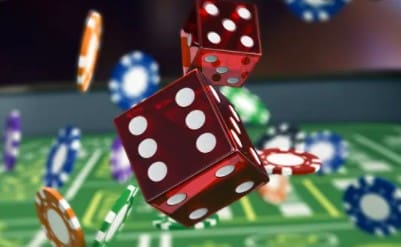The history of slot machines is much shorter than that of classic casino games or card games such as poker. However, in the 1870s, the first slot machines were invented.
Charles Fey, the “father of slot machines,” invented his first machine in 1894. It has stood the test of time and can still be seen in gambling parlors today. The first reels featured cards. Later, the reels included pictures of fruits. So every time you win, the bell rings just like it did 100 years ago.
It is possible to divide the history of machines into three periods.
The first period – mechanical slots machine
Charles Fey was the king in that period, thanks to three-reel slot machines. Cast-iron Liberty Bell was the most popular slot machine at that time.
There were ten symbols on each of the three reels. The jackpot is won if the player gets three identical symbols. One in a thousand people had a chance of winning a jackpot. The Fey machines paid out 50% of the total amount invested.
They altered the design of the slot machines after gambling was outlawed. They used the pictures of chewing gum packets to replace the sums of the prizes. Different tastes were represented as other fruit. With the increasing popularity of the machines, the jackpot amounts also increased. Play to increase the bank, and They added additional reels to the devices. As the slots grew in size, their internal design kept changing.
The second period is the electromechanical slot machine.
The second phase of the development of slot machines was relatively calm and took place in the middle of the twentieth century. Production of the Big Bertha was the brightest moment of this period. But it was soon overshadowed by a more deadly innovation at the time, Super Big Bertha.
They created this super slot machine at the cost of USD 150,000. It featured a 5-horsepower motor, eight reels, and 20 game symbols. Super Big Bertha was undoubtedly a powerful machine. However, it is unlikely that the prizes were generous. The number of payments was only 80% of the money invested, and there was a chance to win a Jackpot of 25,6 million.
Inge Telnaes created the random number generator (RNG) in 1984. This was a crucial step towards the advancement of machines. The random number generator converts weak physical phenomena into digital values, i.e., numbers. The programmed algorithm sorts the numbers continuously. Finally, the player pressed the button to select a random number for a game.
Computerized slots are the third period.
Computerized slot machines are commonplace. Random number generators determine the game and show the numbers corresponding to each reel’s symbols. Online casinos have slot machines, and coins are rarely used. While the fashionable slots may not have much in common with their predecessors, it is clear that they still retain the Fey spirit and design.
With the advent of the third generation of slot machines, the panorama of casinos took a stratospheric jump into the digital epoch. It was the 90s when technology began its rapid march towards unimagined vistas—when gambling witnessed a seismic shift – the birth of computerized slot machines. Enriched with labyrinthine algorithms and cutting-edge computer chips, these machines were a spectacle! They paraded elevated graphics, a potpourri of themes, and pulsating bonus games. This wasn’t the slot machine of yesteryears. This machine drew the masses, sparking an explosion of interest in the casino domain.
Parallelly, the world watched the internet unfurl its tendrils into all corners of life, creating a revolution in slot machines. A new entity emerged on the scene, digital casinos, during the mid-90s. Suddenly, gamblers found themselves unshackled from the casino floor. Their favorite games were at their fingertips, in the comfort of their homes. With this liberty came a torrent of digital slot games, not mere shadows of their physical ancestors but interactive, immersive adventures. They introduced a new concept – progressive jackpots. Jackpots grew steadily, promising rewards that could tip the scales of life itself.
The turn of the millennium witnessed another fascinating advancement – the advent of branded slot machines. It was intertwining the reel-spinning realm with pop culture’s throbbing heart. Casino game architects, hand-in-hand with hot movie and TV franchises, birthed games that resonated with the players personally. An engaging, familiar playground was set.
Gaze upon today’s slot machines, and you’ll find a little resemblance to the embryonic concept by Fey. Yet, at their pulsing core, the thrill – the electric excitement of the unpredictable – remains steadfast. They’ve metamorphosed from quaint mechanical contrivances to intricate digital marvels yet remain a testament to chance. The unpredictability of outcomes, as tantalizing today as it was over a hundred years ago, continues to trap players. The journey of slot machines has been a thrilling saga of evolution, and rest assured, and the narrative hasn’t ended; it continues to carve new frontiers.


